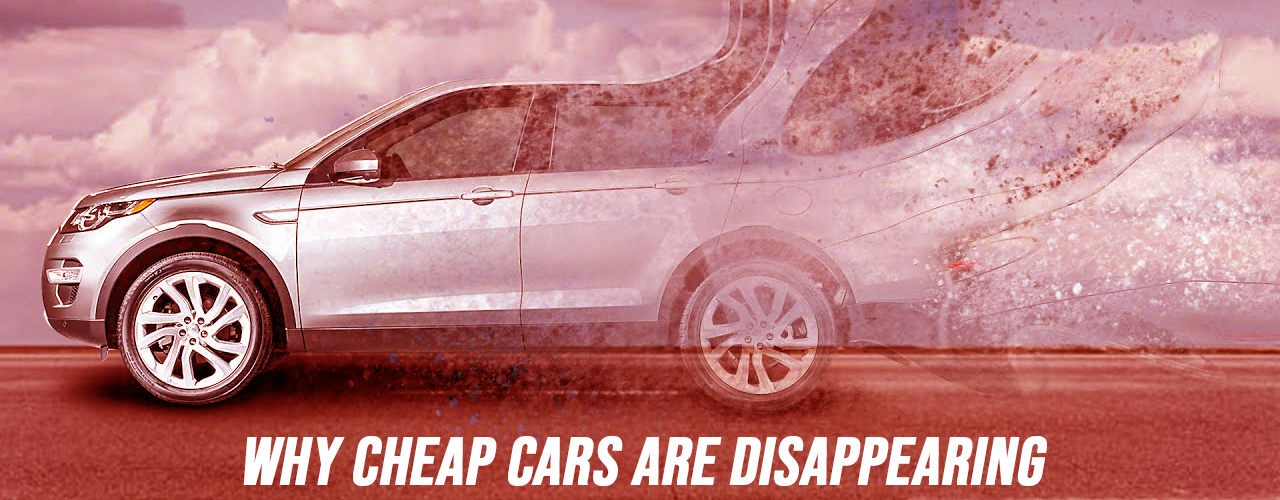
There are about 40 different car brands in the united states. There are American brands and imports, trucks, SUVs, sedans, sports cars, and many crossovers. Of course, there are pricy cars and perhaps more affordable cars, but one kind of car that appears to be disappearing is the cheap car.
Auto industry analysts say sales of very inexpensive cars mean that any new vehicle with a starting price below $20,000 is declining. In fact, they have fallen off a cliff.
Historically, about 1/5 of new vehicle sales would have been below $20,000. But in the last few years, those have entirely dried up. New cars are becoming more expensive. It is unlikely that those cheap cars will ever be back.
Why are cheap cars disappearing?
The early years of automotive manufacturing were dominated by what we would call coachbuilders today. Shops that hand assembles vehicles one at a time. This is how horse-drawn carriages or coaches were built, and automotive manufacturing adopted the process and the name. As such, early cars were expensive.
Industrialists like Henry Ford changed all of that. They introduced assembly lines that drastically reduced the expense of building cars. Ford‘s Model T was one of those early vehicles.
In Europe, there was a movement to build inexpensive cars for the masses, which many people called People’s cars. Volkswagen’s brand name directly translates to People’s cars. Making and selling practical, affordable, and dependable cars have long been a critical goal for automakers. Affordable was a crucial ingredient in legendary and extremely strong selling cars such as the original VW Beetle, Ford Mustang, and countless others.
Japanese automakers penetrated the US market in the latter half of the 20th century in part by selling affordable and dependable vehicles. Typically the most affordable cars are the smaller ones that would fit into the compact and the subcompact categories. However, some mid-sized vehicles could also fit into the category under $20,000.
Cheap cars have a problem that might seem pretty obvious. They don’t make a lot of money.
Automakers, like any company, have certain fixed costs built into their business models. They have to build factories, keep the lights on, pay for product development, and pay workers. Many of these basic costs exist regardless of the products they are selling are cheap or expensive. So, an automaker has two choices. They have to build a lot of something cheap or a little of something expensive.
The problem for automakers is selling anything for volume can be challenging. Margins can be razor-thin, and any challenges or missteps can eat into already slim profits. Automakers can try to prevent this by spreading costs among many different models or trims. Prominent examples of this are the Ford Mustang, Dodge Challenger, and Chevrolet Camaro. The cheapest versions of these start in the mid $20,000 range, but the most expensive versions, which share many of the same basic parts, can cost over $90,000.
In the US, the overall market appears to be moving away from the cheapest price points. So who buys cheap new cars, and why do they matter? The short answer is young people, at least in part. Young people tend not to have as much money and are first-time buyers. These buyers have a tight budget, and many need to split their already tight budget. As these consumers get their first job, establish a family, and get their first car, they will be searching in the under $20,000 range.
Even though cheap cars are less profitable, automakers are still interested in luring in younger buyers who have many years of car buying in their future. In addition, selling cheap cars creates the possibility of building brand loyalty for a lifetime. In recent years, even BMW and Mercedes have moved into the lower end of the market to boost volume and get younger buyers in their vehicles.
Despite the risks of selling cheap cars, they historically made up a significant share of the new car market. This appeared to be the case even in recent years, as the US economy recovered from the financial crises of 2008 and 2009. But something strange happened in 2018.
Sales of the sub $20,000 cars seemed to plummet suddenly. However, a closer look at sales numbers showed that cheaper cars were disappearing faster and earlier than it seemed. For some of those years following the recession, two vehicles that made up a significant portion of the sales below $20,000 were the Honda Accord and Toyota Camry. These vehicles are in the midsize range and typically sell in the mid-$20,000 range. But both were selling at very low prices for several years due to incentives dealers were offering on them. It is worth noting that these two vehicles are among the most popular cars in America.
 In 2017 both manufacturers were scheduled to release new versions of the Accord and Camry. Unfortunately, when they did, it caused the incentives on these two vehicles to drop and no longer fall in the sub $20,000 range—causing sales numbers in the sub $20k category to cut in half.
In 2017 both manufacturers were scheduled to release new versions of the Accord and Camry. Unfortunately, when they did, it caused the incentives on these two vehicles to drop and no longer fall in the sub $20,000 range—causing sales numbers in the sub $20k category to cut in half.
 The reality is the cheapest tier of cars has already been shrinking for years since the recession, even though it looked like it still represented 20% of new car sales. As the Accord and Camry exited that category, the actual market share decline was exposed.
The reality is the cheapest tier of cars has already been shrinking for years since the recession, even though it looked like it still represented 20% of new car sales. As the Accord and Camry exited that category, the actual market share decline was exposed.
But why where sales of these cars shrinking?
The all too familiar answer is, in three letters, SUV. As a result, sport Utility vehicles have taken over the auto market in the United States. SUVs went from 29.9% of sales in 2009 to 51.5% of sales in 2019. They are found in virtually every size and configuration. Consumers appear to love them, but so do automakers. The smallest SUVs sell for higher prices than comparable cars, even cars built on the same platforms as the pricier SUVs.
For example, for years, Ford sold the subcompact car called the Fiesta in the United States, but when Ford released its subcompact eco sport SUV, the carmaker’s smallest crossover, the average transaction price increased by $4,500. So Ford has decided to stop making the Fiesta and continue investing in its SUV lineup.
The subcompact SUV, which used to be somewhere in the range of 2% of the market, is well over 8% today. It outsells both the midsize car and the compact car.
Consumers have also shown a willingness to pay higher prices for SUVs, primarily because they feel they are getting more.
But the SUV is not the only reason the Auto industry analysts think car prices are rising. Another critical piece of the puzzle is technology. Today’s cars are packed with it, and customers want more of it when they drive off the lot. This includes safety features and driver assistance technology. Technology like cameras and blind-spot monitoring systems are the norm. In addition, the robust infotainment systems that support Android and Apple phones and showcase ever-increasing screen sizes add to overall costs to manufacturers.
Today vehicles are required to have specific technology features, and consumers’ expectations continue to grow. As cars become more standardized and hardware more consistent, automakers have a more challenging time justifying trim levels via software limitations. In addition, since all vehicles have to have a backup camera and that camera has to have a screen, automakers have decided to increase overall MSRPs to combat the loss of tiers they had in the past.
Loan Terms grew in length in 2020
Higher-priced vehicles are more accessible when you can split the payment over a more extended period. The share of loans spanning 72 to 84 months has grown considerably from where they were decades ago. Consumers are faced with fewer options at the lower end and are more likely to shell out more for a new car or turn to the used car market.
The US market is massive. For example, at their peak, new car sales reached about 17.5 million units in 2015. But the used car market is twice the size at about 40 million units per year.
The good news for buyers is that cars last longer than they used to, so buying used often does not come with the risks it might have in the past.
If you think buying used has a stigma check out our inventory of vehicles that still have the manufacturer’s warranty in place. These vehicles offer the same backing as a new vehicle, with a significantly reduced price point. The under $20,000 new car segment might be dying, but there are plenty of used cars in that range. Check them out here.




